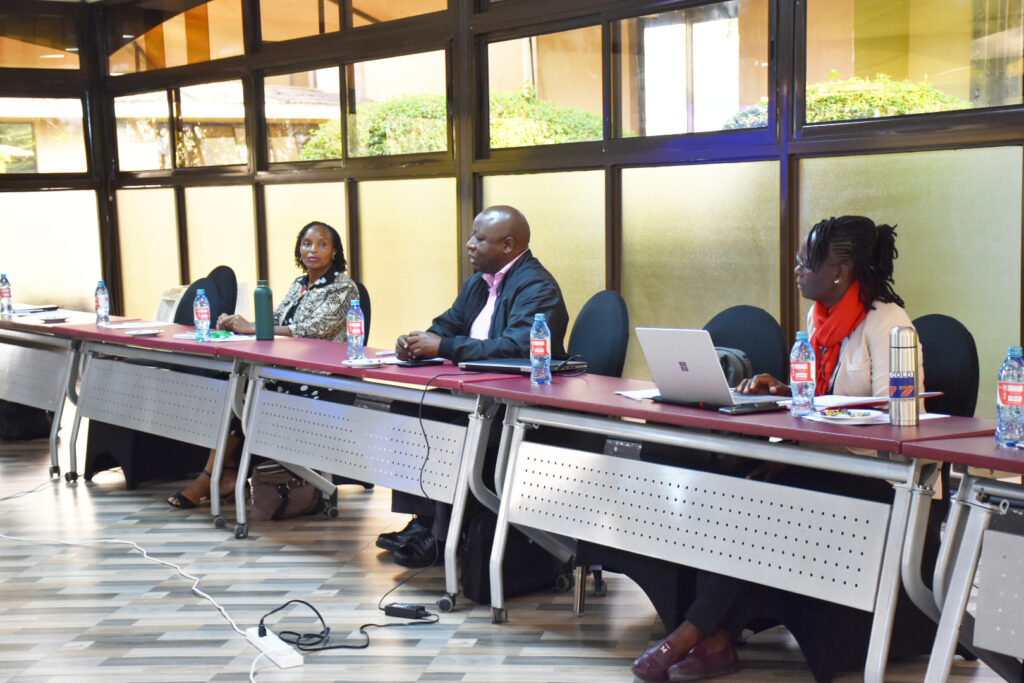
INTERNATIONAL TRAINING ON MONITORING FOREST AND LANDSCAPE RESTORATION
COURSE BACKGROUND
As countries commit to restoring degraded landscapes, robust monitoring is essential to track progress and ensure efforts are effective. Many restoration projects lack clear systems to assess goals, support adaptive management, or ensure transparency. This gap hinders the success of vital Forest and Landscape Restoration (FLR) initiatives.
ECAS Institute recognizes that good monitoring is key for impactful FLR. We aim to strengthen the capacity of professionals to design and implement strong monitoring systems for restoration projects. This ensures efforts are accountable and truly contribute to healthier landscapes.
This course is designed to equip practitioners with the practical skills to plan, design, and implement FLR monitoring systems. Participants will learn how to set goals, choose indicators, collect data, and build restoration indices. This will lead to transparent, adaptive, and successful FLR interventions.
COURSE OBJECTIVES OF THE TRAINING
Upon completion of this training, participants will be able to:
- Explain what monitoring is, its principles, and why it is important for FLR.
- Identify restoration goal-themes and sub-themes.
- Choose appropriate indicators to meet restoration objectives.
- Design a restoration monitoring framework, including considerations of trade-offs and synergies, land uses, and constraints.
- Filter indicators, establish baselines, and set targets.
- Decide which data should be collected.
- Rank indicators and build a restoration index.
WHAT YOU WILL LEARN
This course will provide practitioners with the capacity to design, plan, and implement monitoring systems for FLR interventions. You will learn:
- What monitoring is, its principles and why it is important for FLR.
- How to identify restoration goal-themes and sub themes.
- Choosing appropriate indicators to meet restoration objectives.
- Designing a restoration monitoring framework, including considerations of trade-offs and synergies, land uses and constraints.
- Filtering indicators, baseline and targets.
- Deciding which data should be collected.
- Ranking indicators and building a restoration index.
DURATION AND PROGRAM
This is a structured training course. The program is designed to equip participants with practical skills in designing and implementing FLR monitoring systems, combining expert instruction with hands-on exercises, case studies, and opportunities for developing components of a monitoring plan. The detailed program schedule, including specific session timings and practical assignments, will be communicated prior to the training commencement.
TARGET PARTICIPANTS
This course is designed for a range of stakeholders with an interest in forest and landscape restoration, including practitioners and policymakers from:
- International and regional organizations and donors;
- National governments;
- Private sector;
- Non-governmental organizations (NGOs); and
- Research institutes and universities.
TRAINING MODULES
The course is structured into comprehensive modules, guiding participants through the complete process of designing and implementing effective monitoring systems for FLR:
| No | Module | Details | |
| 1. | Fundamentals of Monitoring for FLR |
This module introduces the core concepts of monitoring, its principles, and why it is an indispensable component of successful Forest and Landscape Restoration initiatives.
|
|
| 2. | Defining Restoration Goals and Objectives |
This module focuses on the crucial initial step of any monitoring system: clearly defining what the restoration effort aims to achieve.
|
|
| 3. | Selecting and Filtering Appropriate Indicators |
This module guides participants through the process of choosing relevant and measurable indicators to track progress towards their defined restoration objectives.
|
|
| 4. | Designing the FLR Monitoring Framework |
This module focuses on the systematic design of a comprehensive monitoring framework, considering various influencing factors and practical constraints.
|
|
|
5.
|
Data Collection, Management, and Analysis for FLR Monitoring |
This module provides practical guidance on the ‘how-to’ of data collection, emphasizing data quality, management, and analysis to build a coherent picture of restoration progress.
|
|
| 6. | Ranking Indicators and Building a Restoration Index |
This capstone module enables participants to synthesize their monitoring data into meaningful insights and potentially create a composite index to track overall restoration success.
|
|
TRAINING STYLE
The modules will be taught through PowerPoint presentations, and lectures and will include a case study/field visit, breakout sessions, case studies and other interactive discussion components.
The course will also include a few guest speakers, both in person and via Zoom and other online learning platforms for overseas speakers. This provides useful real-world insights alongside the more theoretical aspects of the course.
The conference faculty shall consist of experienced decision makers, as well as practitioners and representatives from established educational and research institutions active around climate change, engineering and international development. Throughout the course, theoretical presentation of concepts will be moderated and more group discussions and plenary engagements will be optimized. PowerPoint presentations will be made by facilitators and resource persons, to highlight key concepts before embarking on group work.
GENERAL NOTES
- Training manuals and additional reference materials are provided to the participants.
- Upon successful completion of this course, participants will be issued with a certificate.
- We can also do this as a tailor-made course to meet organization-wide needs. Contact us to find out more: info@ecasiafrica.org.
- Payment should be sent to our bank account before the start of training and proof of payment sent to: info@ecasiafrica.org.
ABOUT ECAS INSTITUTE
The ECAS Institute designs and delivers independent and targeted training, research, and consulting services. Our work focusses on climate change and resilience building, carbon markets, renewable energy, nature-based solution, biodiversity conservation, agriculture and food systems, We are located in Nairobi Kenya and work across the African region. We have implemented training and research assignments in Kenya, Tanzania, Uganda, South Sudan, Somalia, Malawi, Rwanda, Congo, and South Africa. Globally, we have supported our partners from the UK, Denmark, Italy, Sweden, Germany, and USA.
